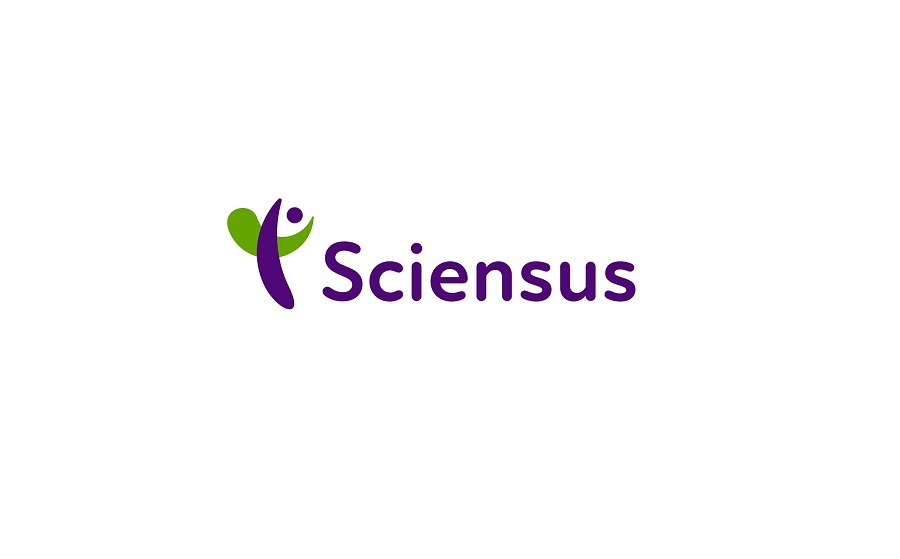Digital PROs: The strategic advantage pharma needs in oncology care
As oncology treatments become more targeted and complex, pharma companies face growing pressure to demonstrate value beyond traditional clinical endpoints. With healthcare systems shifting toward value-based care and placing more weight on real-world outcomes, data on tumour response and overall survival rates alone aren’t enough.
Digital patient-reported outcomes (PROs) offer a way to fill that gap, capturing how patients actually feel and function in real time, across physical, emotional and social aspects. For pharma, this data can support regulatory submissions, label expansions and market differentiation by highlighting value beyond efficacy.
In this blog, Katie Duncalf, Global Digital Commercialisation and Partnerships Lead at Sciensus, explores how digital PROs are shaping oncology strategy and how they can unlock value from development to post-launch.

Why PROs matter for pharma
It’s no exaggeration to say that PROs and patient-reported outcome measures (PROMs) have had a transformative impact on oncology care with their ability to prioritise the patient’s voice. For pharma companies, this is an invaluable opportunity to demonstrate your commitment to patient-centred care. By building PROs into your development and marketing strategies, you really can boost brand value and build rapport with patients, healthcare providers and regulators.
But how does regular monitoring of PROs lead to better patient outcomes? First and foremost, it allows us to ensure that symptoms and side effects are addressed effectively and quickly. This then improves quality of care and patient experience. PROs can also be incredibly helpful in showing us what matters most to patients, enabling better-informed decision-making and the development of personalised treatment options.
PROs also offer you a strategic advantage in building a compelling value story. By incorporating PRO data into your development and marketing plans, you can differentiate your brand in the competitive oncology market. It enables you to bring your strategies in line with patient priorities and demonstrate your value proposition during pricing negotiations. Using PRO data in a transparent way can also help build trust among patients, healthcare providers and payers, positioning your organisation as a leader in patient-centred care.
Key applications of PROs across the oncology product lifecycle
While there are challenges to overcome, I believe PROs can add value at every stage of the oncology product lifecycle. They offer us crucial insights that can improve both clinical and commercial strategies, from building a value story to identifying evidence needs:
Clinical development
Including PROs in clinical trials can help us gather vital data on treatment tolerability, helping researchers better understand the impact of therapies on patients’ lives. They can also help us choose more meaningful endpoints that reflect patient priorities for a more patient-centred approach to treatment evaluation.
Market and reimbursement
By capturing real-world data on patient experience, PROs can help build evidence of the therapy’s value beyond clinical measures. This patient-centric data can support health technology assessments (HTAs) and strengthen the case for reimbursement and market access.
Commercial strategy
Integrating PRO data into marketing plans can help you differentiate your brand in a highly competitive landscape. Being able to show its real-world impact on patient outcomes and quality of life in discussions with healthcare providers and in pricing and reimbursement negotiations can be extremely powerful.
Post-market activities
PROs are essential for monitoring long-term treatment effects in real-world settings. The data gathered from PROs can generate valuable real-world evidence, demonstrating the impact of treatments on patients’ wellbeing and guiding future decision-making.
How to collect PROs digitally
Digital platforms can significantly streamline the collection of PROs, offering many advantages over traditional paper-based methods. With electronic PROs (ePROs), patients can easily report symptoms, treatment side effects, and quality-of-life data remotely via mobile apps or secure web platforms, reducing the need for in-person clinic visits and enhancing patient convenience. ePROs offer a range of benefits that align with pharma’s evolving focus on real world evidence, patient centricity, and data-driven decision making.
Collecting ePROs in oncology and other high-need therapeutic areas, requires tailored implementation strategies. This includes the use of validated, indication-specific ePROs that reflect the nuances of different tumour types, disease stages, and treatment modalities. Customising ePROs to align with different stages of a patient’s journey ensures the data captured is clinically relevant and actionable, enhancing both the scientific value and patient impact.
Regulatory bodies are also increasingly encouraging the use of ePROs, accelerating the adoption of these solutions. Agencies such as the FDA and EMA continue to encourage the use of ePROs to support labelling claims, post-marketing commitments, and real-world evidence generation. As a result, pharmaceutical companies are embedding ePRO strategies earlier in product development and lifecycle planning.
Finally, embedding ePRO collection within electronic health records (EHRs) or centralised patient repositories can enable cross-functional teams including medical affairs, RWE, and patient support teams to access timely insights that inform better care delivery, drive patient engagement, and support evidence-based differentiation in the market. that can be used to improve patient outcomes and streamline workflows.
Challenges in implementing digital PROs
Despite the benefits, integrating digital PROs into oncology care isn’t without its challenges. Some of the key obstacles to overcome include:
Patient engagement & data collection
Collecting ePROs from cancer patients can be challenging due to treatment fatigue, cognitive burden, or fluctuating health status. Maintaining engagement over long treatment cycles requires patient-centric design and flexible digital interfaces. Additionally, disparities in digital literacy and access to technology, particularly among older or socioeconomically disadvantaged populations, can limit reach and representativeness.
Data privacy, governance and security
It’s crucial to address any privacy and compliance concerns and ensure data collection strategies meet local regulations such as GDPR (General Data Protection Regulation) and HIPAA (Health Insurance Portability and Accountability Act). Ensuring end-to-end data privacy, secure transmission, and transparent patient consent processes is essential, particularly when integrating ePROs into decentralised clinical trials or real world data initiatives. Pharma teams must align with internal governance, pharmacovigilance, and IT security frameworks to ensure compliance.
Lack of standardisation & interoperability
Although validated PROMs exist, there is no universal standard for which measures to use across specific tumor types, lines of therapy or treatment modalities. This lack of standardisation limits data harmonisation across studies and geographies, complicating analyses and health economic evaluations.
Technology integration and workflow disruption
Integrating ePROs into clinical systems whether during clinical trials or routine oncology care remains a major barrier. Many electronic health record (EHR) platforms lack the capability to ingest and structure PRO data in standardised formats, leading to data silos or unstructured notes that are hard to analyse. This creates operational friction, limits real-time insights for providers, and reduces the ability to incorporate PROs into value-based care models or outcomes-based contracting.
Best practices for effective PRO integration
To realise the full value of ePROs in oncology, pharmaceutical companies must take a strategic, evidence-driven approach across development and commercialisation. Some of your key considerations should include:
- Select validated, fit-for-purpose PROMs: It’s best to choose oncology-specific PRO measures, such as EORTC QLQ-C30 or FACT-G that are validated for your target population and aligned with regulatory expectations for clinical trials and label claims.
- Enable scalable, digital capture: Leverage mobile apps and digital health platforms to streamline real-time data collection, increase patient adherence, and reduce site burden, while ensuring accessibility and technical support for diverse patient populations.
- Translate data into actionable insights: Use analytics to identify symptom trends, flag safety signals, and inform clinical and commercial decision-making, supporting both trial optimisation and real-world evidence generation.
- Align with cross-functional value levers: Demonstrate the impact of PROs to internal and external stakeholders by linking data to health-related quality of life improvements, payer-relevant outcomes and brand differentiation across HTA and market access submissions.

Pharma’s role in leading the PRO revolution
Pharma companies are uniquely positioned to drive the adoption of digital PROs in oncology. By investing in scalable digital solutions, integrating PROs into evidence-generation strategies and collaborating with regulatory agencies, pharma can:
- Lead industry-wide adoption of patient-centred metrics
- Drive long-term patient advocacy and brand loyalty
- Optimise commercial success in the shifting healthcare landscape.
Integrating PROs into oncology care is a necessity for companies looking to demonstrate real-world impact, secure reimbursement and build a sustainable competitive advantage. By prioritising PROs, pharma can enhance patient outcomes, strengthen regulatory and market positioning and drive long-term brand value in the highly competitive oncology market.

Sciensus combines over 30 years of expertise with innovative digital platforms to collect real-time patient-reported outcomes (PROs) and support complex medicine use. Our apps and tailored support programs improve adherence and generate rich, longitudinal data, helping pharmaceutical partners drive real-world evidence and support studies like PASS, EAPs, and DCTs.
Read more on…

Blogs
Pharma is sitting on a multi-billion-pound opportunity and it’s buried in patient-reported data
Despite the surge in patient-reported and real-world data (RWD), much of pharma is yet to unlock its full commercial potential.…

Thought Leadership
Beyond adherence driving future healthcare through patient support programmes

Thought Leadership
Unleashing valuable patient insights: The transformative power of patient reported data.
